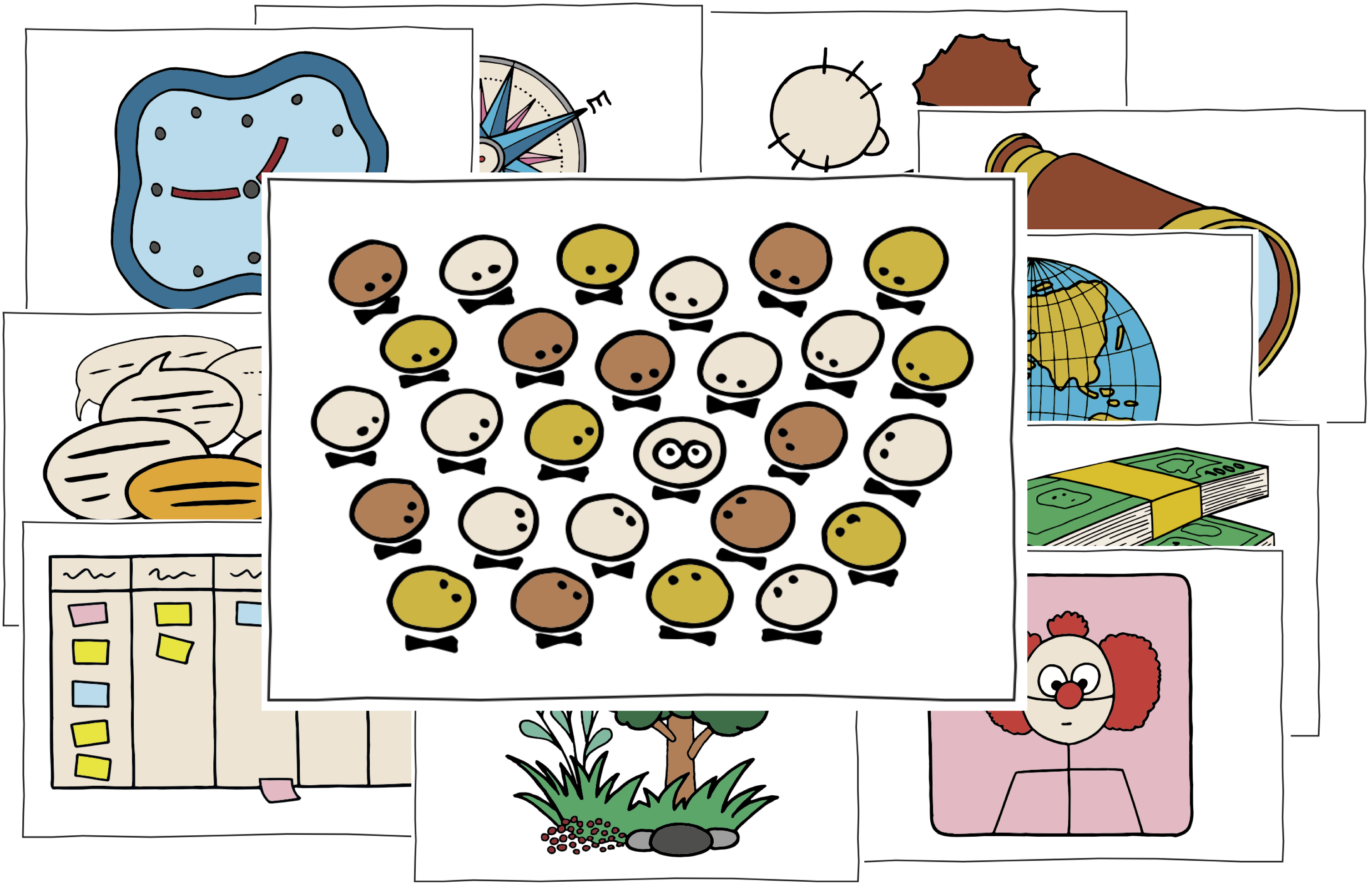When I introduce a new technique or concept to a team, it is sometimes difficult for them to fully see how practice can be beneficial for them or in their context, even if I use games or metaphors. In this case, it is useful for the team to gain an alternative view, i.e. other team members explaining these concepts from their perspective and experience, i.e. why and how they used a task board, how they ran a daily standup or retrospective and more. This helps others to grasp the concepts, and they become more willing to test them.
I made the experience that not anybody likes to share their story; for diverse reasons. Hence, I sometimes run a short session dedicated to sharing experiences. To encourage participants to tell their story, I use the Improv (improvisation) Cards from the Management 3.0 toolbox. These 52 cards solely show images that help the participants to kickstart a conversation.
Preparations
- Take the template for the cards from the Management 3.0 page, print them out and cut them. You can also buy a set of cards from Management 3.0 Shop.
Execution
- Propose a topic, such as Agile Practices, Teamwork or other, e.g.“What does agile mean to you?”, “Why is it important to work as a team?”, “What best describes the last Sprint?” etc.
- Place the cards openly on the table with the picture upwards for everyone to see.
- The first participant takes the card he relates to and shares his experience. The image just ignites the conversion. It doesn’t matter if it plays only a minor part of the story.
- After finishing the story, the person can either keep the card or put it back on the pile.
- Then another participant takes a card and so on until all participants told a story.
Variations
Recently, I have been using these cards the Setting the Scene (Check-In) part of a Retrospective, in different variations, e.g.
- Describe the last Sprint
- “Which image would best describe the last Sprint? Pick up and tell the team briefly, why you picked this card.”
- Describe the behaviour or trait of a person in general or the last Sprint
- “Please choose a card for each / one / of the team-member sitting next to you which best describes him or her (positive) behaviour (in the last Sprint) and give it to this person”
- When everyone has received at least one card, ask the person who received the card “What does this card (these cards) mean to you?“
- Then ask the person who gave the card, if the interpretation was correct and how it was meant.
Learnings
- Let each participant have their say, even if they feel reluctant in the beginning.
- In my experience, it is a good exercise to get people to talk and share experiences, even if they are not big talkers. It is interesting to observe how people open up during this exercise, even though they might be reluctant to participate in the beginning. It brings people out of their comfort zone.
- I recommend using a timebox for each participant, as otherwise not everyone gets their turn and the participants get stuck in a discussion.
- Improv Cards help to enlighten the team to try new things and to get new insights. The story builds a connection that others can relate to (. I often experience an “It’s an excellent idea to do it this way. That could be beneficial for us. Let’s try this the next time”.
- I sometimes use the Improv Cards in a Retrospective as a starter. Each participant is asked to pick the card that reflects the last Sprint and to share their reason. It’s also a good way to energise people at the beginning of the retrospective. Britta Ollrogge has more on using Improv Cards in retrospectives on her page.
- It often is a good idea to let all participants choose a card before they start telling their stories. This way they can pay full attention to the story-teller.
- Instead of cards, I sometimes use Story Cubes. As they have different collections (such as Batman, Dr Who, Horror etc.), story-telling can become even more fun.
Further Readings
- Improv Cards and Storytelling (Management 3.0)
- [amazon asin=0321712471&text=Management 3.0] by Jurgen Appelo
- [amazon asin=1119268680&text=Managing for Happiness: Games, Tools, and Practices to Motivate Any Team] by Jurgen Appelo
- [amazon asin=9081905112&text=How to Change the World: Change Management 3.0] by Jurgen Appelo
- Find out about other Management 3.0 practices in this blog
Original Images of the Improv Cards are © Jurgen Appelo, Creative Commons 3.0 by http://www.management30.com/
- One year – Learning By Playing Meetup - 28/10/2018
- Impact Feedback - 13/03/2018
- T-Shaped Game – Consontants and Vowels - 24/01/2018
